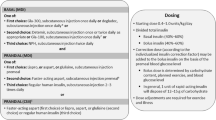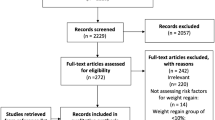Abstract
The methodology of prolonged gastric pH monitoring has not yet been standardized with regard to the number and position of pH probes. Twenty-seven healthy volunteers and 11 patients affected by nonulcer dyspepsia have been submitted to 24-hr ambulatory simultaneous pH monitoring of the distal esophagus, fundus, and antrum. Fundic and antral pH profiles have been compared and causes of pH variations (pH>4) identified. Both in healthy volunteers and dyspeptic patients, percentile curves of fundic and antral pH were statistically different in more than one of the daily periods considered (24-hr, postprandial, interdigestive, nocturnal). Percent time of duodenogastric reflux is significantly higher in the antrum than in the fundus in both groups. Modalities of gastric alkalinization secondary to food or duodenogastric reflux were different for the fundus and for the antrum both in healthy and dyspeptic subjects and between the two groups. These differences suggest that single and multiple pH monitoring of the stomach have different indications, and the position of the probes should vary according to the purpose of the test.
Similar content being viewed by others
References
Hostein J, Bost R, Faure H, Lachet B, Fournet L: Valeur diagnostique de la pH-mètrie gastrique au cours du reflux duodéno-gastrique. Gastroenterol Clin Biol 11:206–211, 1987
Fimmel CJ, Etienne A, Cilluffo T, Ritter C, Gasser T, Rey JP, Caradonna-Moscatelli P, Sabbattini F, Pace F, Buhler HW, Bauerfeind P, Blum AL: Long-term ambulatory gastric pH monitoring: Validation of a new method and effect of H2-antagonists. Gastroenterology 88:1842–1851, 1985
McLauchlan G, Fullarton GM, Crean GP, McColl KEL: Comparison of gastric body and antral pH: A 24 hour ambulatory study in healthy volunteers. Gut 30:573–578, 1989
Krawiec J, Odes HS, Schwartz B, Lamprecht SA: Regional difference in ambient intraluminal gastric acidity after cimetidine monitored by intragastric pH-metry. Am J Gastroenterol 78(5):272–275, 1983
Londong W, Angerer M, Bosch R, Koelzow H: Standardization of electrode positioning and composition of meals for long-term intragastric pH metry in man. Dig Dis 8(suppl 1):46–53, 1990
Gozzetti G, Pilotti V, Spangaro M, Bassi F, Grigioni WF, Carulli N, Loria P, Felice V, Lerro F, Mattioli S: Pathophysiology and natural history of acquired short esophagus. Surgery 102(3):507–514, 1987
Mattioli S, Pilotti V, Felice V, Lazzari A, Zannoli R, Bacchi ML, Loria P, Tripodi A, Gozzetti G: Ambulatory 24-hr pH monitoring of esophagus, fundus, and antrum. A new technique for simultaneous study of gastroesophageal and duodenogastric reflux. Dig Dis Sci 35(8):929–938, 1990
Talley NJ, Phillips SF: Non-ulcer dyspepsia: Potential causes and pathophysiology. Ann Intern Med 108:865–879, 1988
Walt RP, Male PJ, Rawlings, J, Hunt RH, Milton-Thompson GJ, Misiewicz JJ: Comparison of the effects of ranitidine, cimetidine and placebo on the 24 hour intragastric acidity and nocturnal acid secretion in patients with duodenal ulcer. Gut 22:49–54, 1981
Savarino V, Mela GS, Zentilin P, Bonifacino G, Moretti M, Valle F, Celle G: Low bedtime doses of H2-receptor antagonists for the acute treatment of duodenal ulcer. Dig Dis Sci 34:1043–1046, 1989
Machida T: A study of intragastric pH in patients with peptic ulcer-with special reference to the clinical significance of basal pH value. Gastroenterol Jpn 16:447–458, 1981
Moore JG, Halberg F: Circadian rhythm of gastric acid secretion in men with active duodenal ulcer. Dig Dis Sci 31(11):1185–1191, 1986
Houghton LA, Read NW, Heddle R, Dent J: Relationship between fluctuations of pH and pressure in the human stomach and duodenum. Dig Dis 8(suppl 1):71–81, 1990
Savarino V, Mela GS, Scalabrini P, Magnolia MR, Percario G, Di Timoteo E, Celle G: 24-H comparison between pH values of continuous intraluminal recording and simultaneous gastric aspiration. Scand J Gastroenterol 22(2):135–140, 1987
Merki HS, Witzel L, Walt RP, Cohnen E, Harre K, Heim J, Mappes A, Rohmel J: Day-to-day variation of 24-hour intragastric acidity. Gastroenterology 94:887–891, 1988
Author information
Authors and Affiliations
Rights and permissions
About this article
Cite this article
Mattioli, S., Felice, V., Pilotti, V. et al. Indications for 24-hour gastric pH monitoring with single and multiple probes in clinical research and practice. Digest Dis Sci 37, 1793–1801 (1992). https://doi.org/10.1007/BF01308070
Received:
Revised:
Accepted:
Issue Date:
DOI: https://doi.org/10.1007/BF01308070




